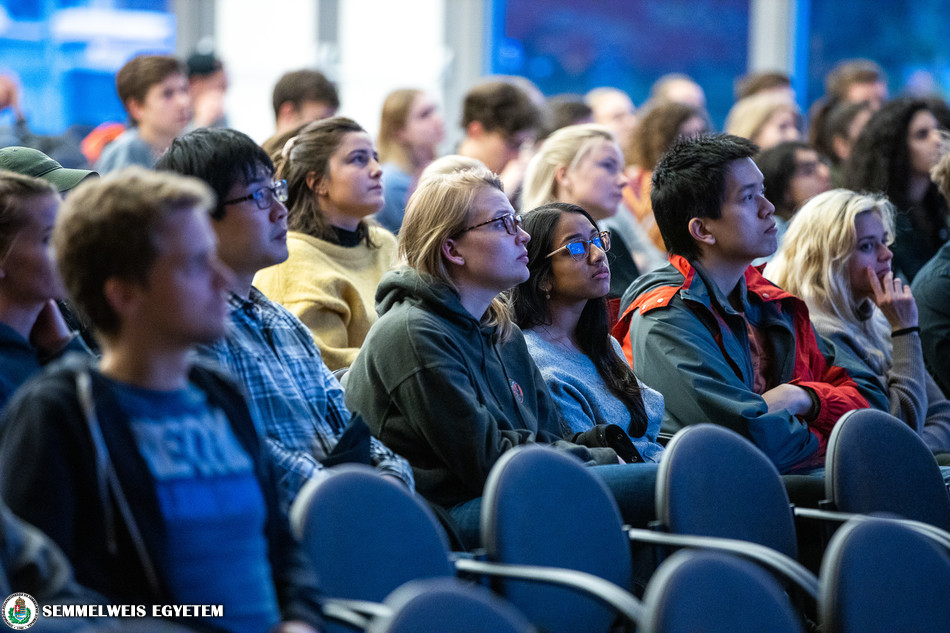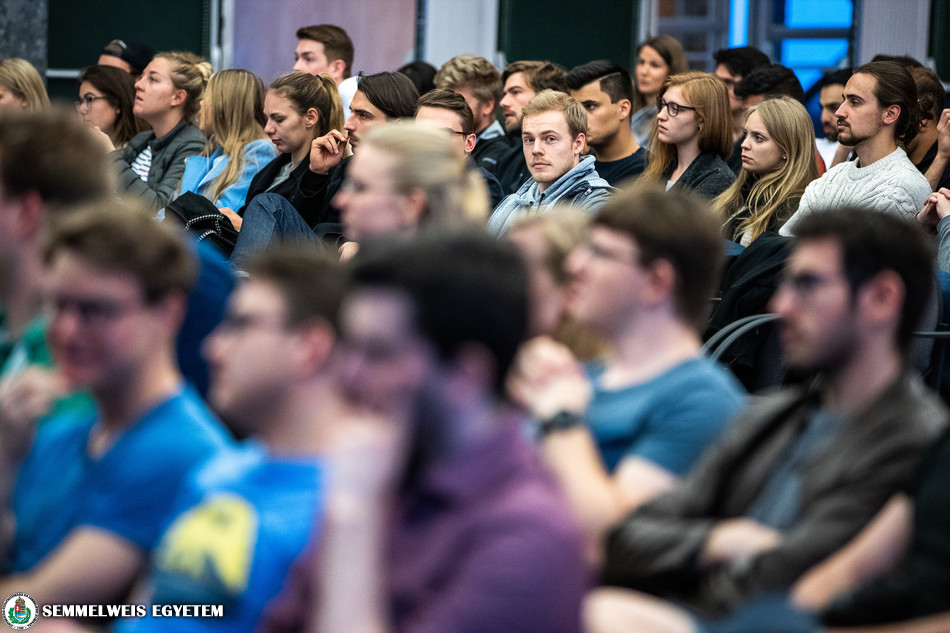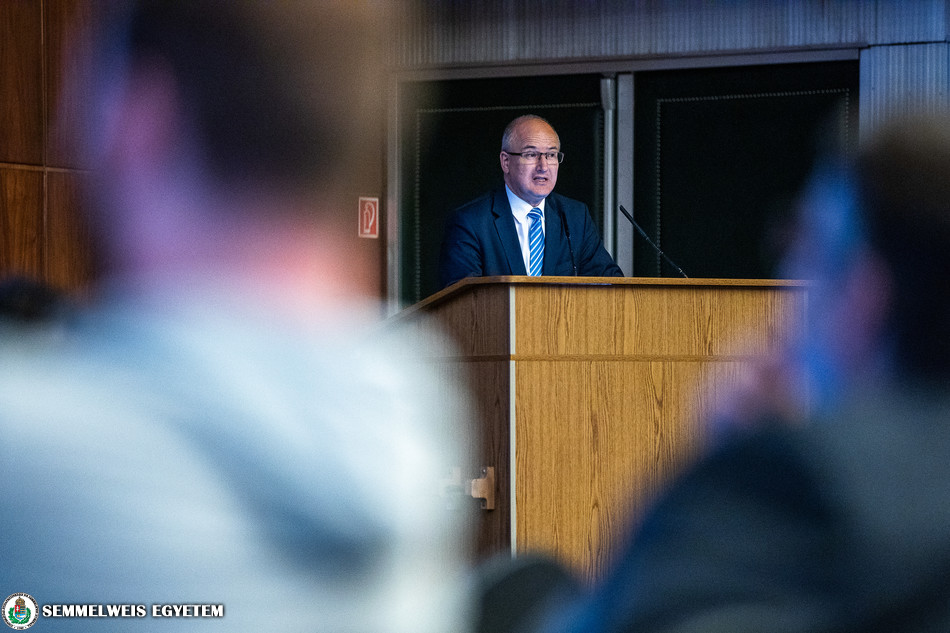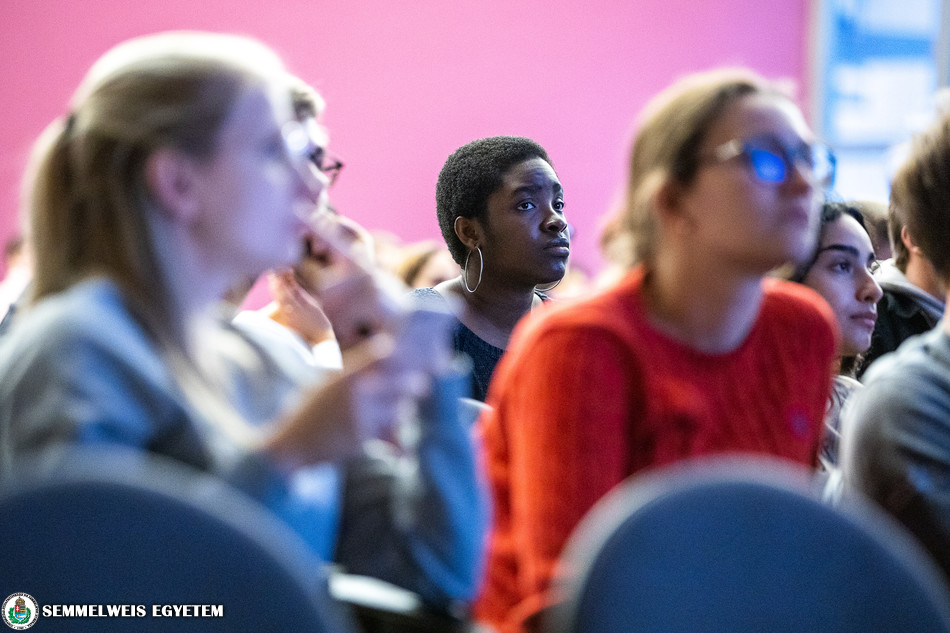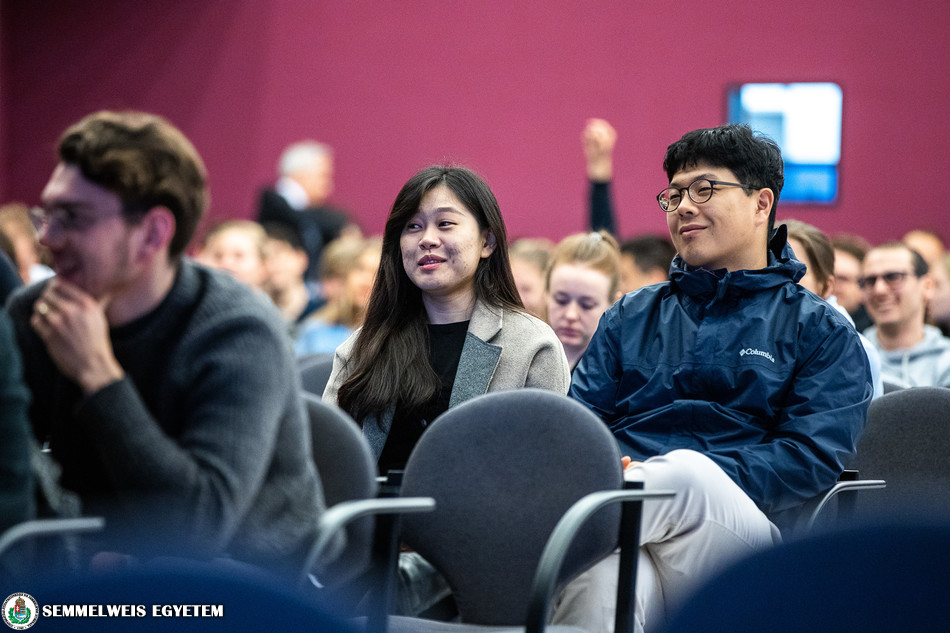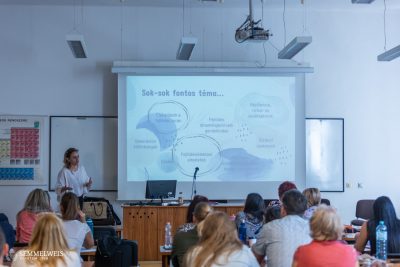A separate discussion forum was held especially for international students, in addition to the one for Hungarian students, in preparation for the planned introduction of a revised curriculum starting in the 2019/20 academic year. Rector Dr. Béla Merkely and Dr. Miklós Kellermayer, the dean-elect of the Faculty of Medicine, presented the planned changes, following which they both fielded questions and comments from students at the forum held in the Nagyvárad tér Theoretical Building (NET).
In his opening remarks, rector Dr. Béla Merkely introduced the curriculum reform, noting that it was put together based among others on visits to renowned international universities such as Harvard, Oxford and various German institutions. He said that while Semmelweis University is very well known especially in the Central and Eastern European region, and is among the top 400 universities worldwide, including the top 150 medical universities, the goal is to be in the top 100. “We want to teach the best medical students to become the best doctors, dentists and pharmacists,” he said, adding that the goal is to put more emphasis on clinical practice, and thus to create a curriculum and structure to support this.
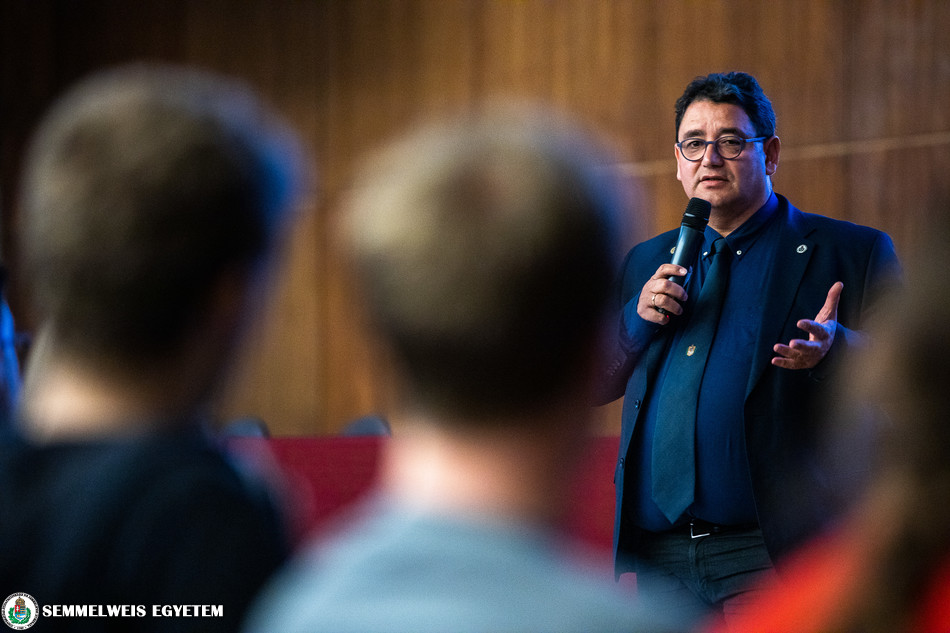 The objective is to train general practitioners as efficiently as possible, said Dr. Miklós Kellermayer in his presentation, who in addition to having recently been named the new dean of the faculty has also been working for months on a modern program of medical training as a rector’s commissioner. “The goal is for a GP to graduate as an independently, critically thinking individual, who is capable of making certain medical decisions,” he noted, adding that they should also know the general practice of emergency and carry on learning for a lifetime. Among the tools used to work out the new curriculum, he mentioned a clarification of the hierarchy between subjects and the modular structure of subjects, eliminating overlaps, rethinking some subjects that form the backbone of medical training, and especially the strengthening of clinical training.
The objective is to train general practitioners as efficiently as possible, said Dr. Miklós Kellermayer in his presentation, who in addition to having recently been named the new dean of the faculty has also been working for months on a modern program of medical training as a rector’s commissioner. “The goal is for a GP to graduate as an independently, critically thinking individual, who is capable of making certain medical decisions,” he noted, adding that they should also know the general practice of emergency and carry on learning for a lifetime. Among the tools used to work out the new curriculum, he mentioned a clarification of the hierarchy between subjects and the modular structure of subjects, eliminating overlaps, rethinking some subjects that form the backbone of medical training, and especially the strengthening of clinical training.
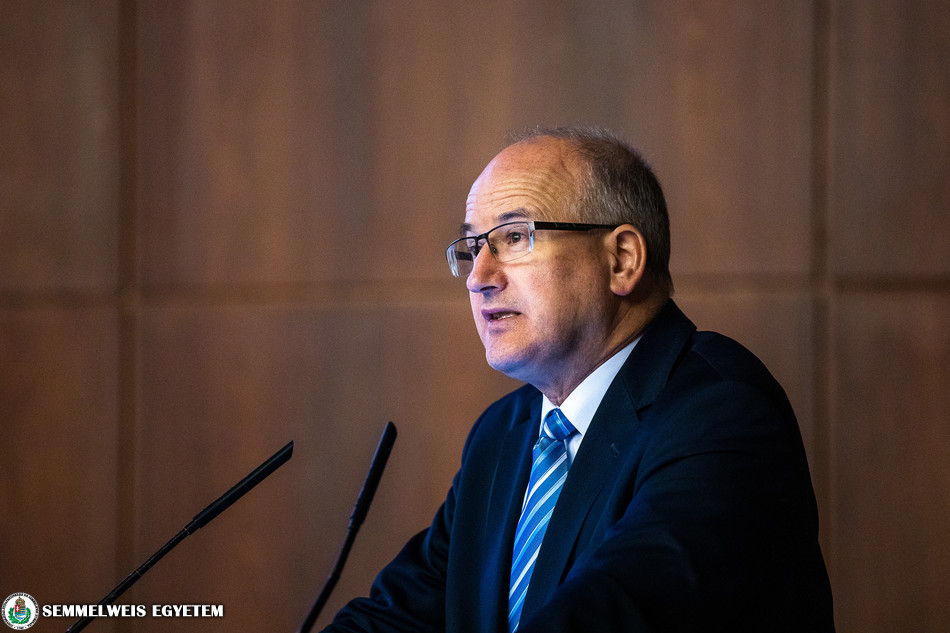 Dr. Kellermayer noted that the overarching logic of subjects will remain the same in the curriculum, medical training will not be fully upended, it will merely take on a more efficient form. The new curriculum is planned to be introduced in the upcoming 250th anniversary year of the university, at the boundaries of the various modules, meaning in the first, third, fourth and sixth years.
Dr. Kellermayer noted that the overarching logic of subjects will remain the same in the curriculum, medical training will not be fully upended, it will merely take on a more efficient form. The new curriculum is planned to be introduced in the upcoming 250th anniversary year of the university, at the boundaries of the various modules, meaning in the first, third, fourth and sixth years.
Elaborating on the details of the reform, he said that the theoretical module will be held in the first two years, followed by the pre-clinical module in the third, after which the clinical module will be taught in a block-type system during the fourth and fifth years, with each module including the subjects that are relevant to it. The sixth year will be one of mainly practice and exams.
The subjects that form the backbone of medical training will be anatomy, physiology, biochemistry, pathology, pharmacology, internal medicine and other closely related subjects, which will be supported by translational medicine, laboratory medicine and medical imaging. Meanwhile, subjects on behavioral science and psychiatry will help further specialize medical skills. As an important change, he noted that the health of physicians will also receive more emphasis, which will include the introduction of mandatory physical education classes in all six years. However, any form of regularly pursued sports will be accepted as well.
Dr. Miklós Kellermayer presented in detail the subject structure of the first six semesters of education. One important change will be that anatomy will be split into two – macroscopic anatomy, and microscopic anatomy and embryology – and will be taught in the first three semesters, partially overlapping. Subjects taught in the first semester will include medical chemistry and basic cell science, while the second semester will include biochemistry, anatomy and introduction to clinical practice. He also noted this semester will already heavy heavy hours of a practical component and a lower number of lectures. In the third semester, microscopic anatomy and embryology will conclude in an exam, which spreads anatomy exams out evenly, while the schedule will also cover medical physiology, medical biochemistry and molecular cell biology. The fourth semester will see some changes, with general microbiology brought forward to the theoretical module, and subjects such as genetics and genomics.
The subjects in the fifth semester, the start of the pre-clinical module, will see some of the most important changes, with pharmacology brought forward from the fourth to the fifth year, and a new subject of EKG in clinical practice. Medical microbiology and pathology will also be on the schedule, as well as translational medicine and pathophysiology, while instead of biostatistics, medical statistics, IT and biomedicine will be taught. The sixth semester (the end of the pre-clinical module) will cover translational medicine and pathophysiology II, pharmacology II and pathology II, medical law, expert surgical methods, medical ethics, and an internal medicine practice.
The most novelties of the new curriculum are in the clinical module, i.e. years four and five, as it will be taught in the above-mentioned block system. Each subject will be taught in its own block, including both theoretical and practical elements, followed by an exam. The practice will entail essentially shadowing the tutors for full days in small groups. This module will not have a separate exam period, teaching will last 40 weeks and students will be split into up to 16 groups, Dr. Kellermayer said.
The dean-elect noted that the total time of a block will depend on the subject, for example, a two-credit block will last two weeks with eight-hour days, with three days on the first week, leaving the other two days for students’ other commitments (electives, research, studying). The second week will have one day at a clinic and end with two days for exams. For bigger subjects, the same structure can be extrapolated to a longer version.
Among other novelties, he mentioned that some subjects, like internal medicine, cardiology and angiology, and surgery will be merged into one class instead of two. Also, medical imaging and laboratory medicine will be taught in short blocks in not too many hours, but will also form part of several other related blocks as well. Family medicine and clinical pharmacology will also be in this semester, which overall will be two weeks shorter, at 40 weeks total.
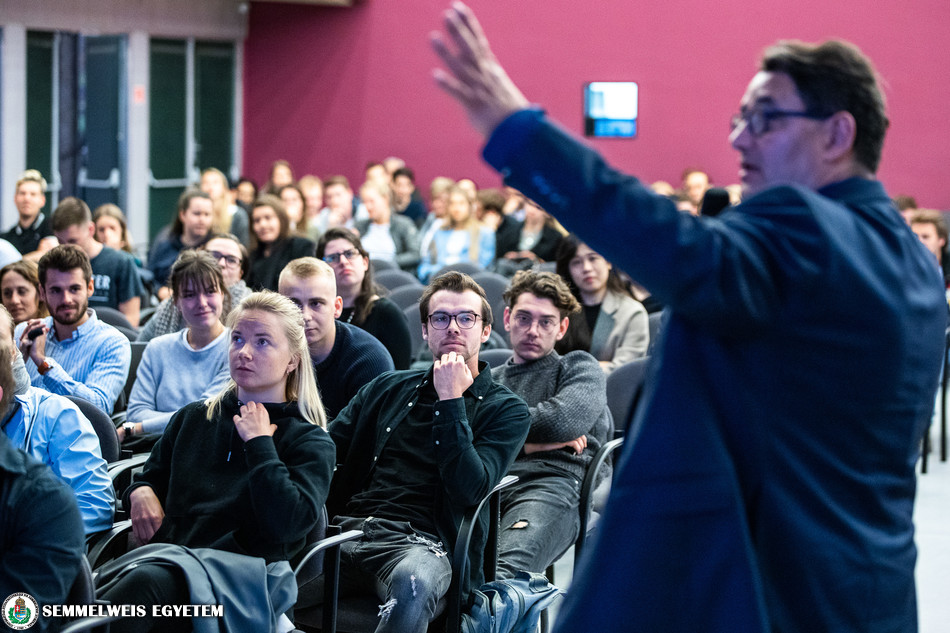 The fifth year will include in block form internal medicine II, oncology and surgery III, as well as two new subjects: sports medicine and rehabilitation, as well as public health, which will involve various university and outside units, plus the Semmelweis Health Development Center.
The fifth year will include in block form internal medicine II, oncology and surgery III, as well as two new subjects: sports medicine and rehabilitation, as well as public health, which will involve various university and outside units, plus the Semmelweis Health Development Center.
The sixth year includes novelties that Dr. Kellermayer said will have huge benefits and has very forward-looking elements. The two main ones are that transfusion training will be expanded to two weeks, and will end in a license in the practice for all students, and that there will be a six-week elective clinical course that students can complete at any unit of the university, or even in their home countries.
Regarding the schedule for finalizing the new curriculum, Dr. Kellermayer said he hopes that all the necessary voting procedures by the faculties and the Senate on its overarching logic will be completed by mid-June, opening the way for implementation to start in September. “We hope to introduce and fully implement the new curriculum in two years,” he added.
The two university leaders received numerous questions from international students, with rector Merkely fielding and answering queries in mostly German, and Dr. Kellermayer responding in English. Both of them showed openness and flexibility on some questions and concerns raised by students, as well as their suggestions, and promised to respond to their comments in earnest wherever possible, as well as continue the consultation process in the weeks to come, before the curriculum reaches its final form.
“My doors are open to discuss requests and logistical problems, and we can still make some small changes before the new curriculum is finalized,” said Dr. Béla Merkely in his closing remarks, noting that he has some ideas, for example, on how to make the transitions between years two and three, and three and four, easier. “But the overall goal is for students to learn more and graduate the university as complete doctors, and for the university to be more efficient in teaching medicine.”
The full English-language presentation can be downloaded here.
Tamás Deme, Eszter Keresztes
Photo: Attila Kovács – Semmelweis University, Gábor Ancsin
